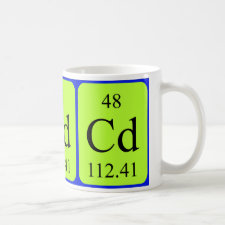
Authors: Barciela-Alonso MC, Plata-García V, Rouco-López A, Moreda-Piñeiro A, Bermejo-Barrera P
Article Title: Ionic imprinted polymer based solid phase extraction for cadmium and lead pre-concentration/determination in seafood.
Publication date: 2014
Journal: Microchemical Journal
Volume: 114
Page numbers: 106-110.
DOI: 10.1016/j.microc.2013.12.008
Alternative URL: http://www.sciencedirect.com/science/article/pii/S0026265X13002580
Abstract: A method for trace Cd and Pb determination in fresh fish samples by Electrothermal Atomic Absorption Spectrometry (ETAAS) has been developed. A preconcentration step was necessary due to the low levels of these elements in fresh fish samples. Solid phase extraction (SPE) using ionic imprinted polymers (IIPs) as an adsorbent was selected as the preconcentration technique. The IIPs were prepared via precipitation polymerization using 2-(diethylamino) ethyl metacrilate (DEM) as a monomer and 8-hydroxyquinoline as a complexating agent. The 2,2'-azobisisobutyronitrile (AIBN) and acetonitrile/toluene (3:1) mixture were used as initiator and porogen, respectively. A microwave assisted acid digestion procedure using nitric acid and hydrogen peroxide was applied for sample preparation. The experimental parameters for SPE extraction in column mode, such as pH of the digested sample, sample volume, load rate, and elution rate, have been optimized. The optimum pH for quantitative Cd and Pb retention was 8.5, and the elution was completed with 2 mL of 2.0 M nitric acid. Cadmium and lead concentrations in the acid extracts were determined by ETAAS using palladium and magnesium nitrates as a chemical modifier. The limits of detection (LODs) and limits of quantification (LOQs) obtained were 0.15 and 0.52 μg L-1 for Cd determination, and 0.50 and 1.68 μg L-1 respectively for Pb determination. Taking into account the mass of sample used and the preconcentration factor (12.5), the LODs obtained were 0.21 and 0.67 ng g-1 for Cd and Pb respectively. These limits are adequate to determine Cd and Pb at levels lower than the maximum levels allowed in fresh marine products, by the European Union legislation. The optimized method was applied for Cd and Pb determination in different seafood samples, such as squid, hake, sardine, horse mackerel, grouper and gilthead bream, and it was possible to detect both metals in all samples
Template and target information: lead ion, Pb(II), cadmium ion, Cd(II)
Author keywords: ionic imprinted polymer, solid phase extraction, Fish samples, cadmium, lead, ETAAS



Join the Society for Molecular Imprinting

New items RSS feed
Sign-up for e-mail updates:
Choose between receiving an occasional newsletter or more frequent e-mail alerts.
Click here to go to the sign-up page.
Is your name elemental or peptidic? Enter your name and find out by clicking either of the buttons below!
Other products you may like:
 MIPdatabase
MIPdatabase









